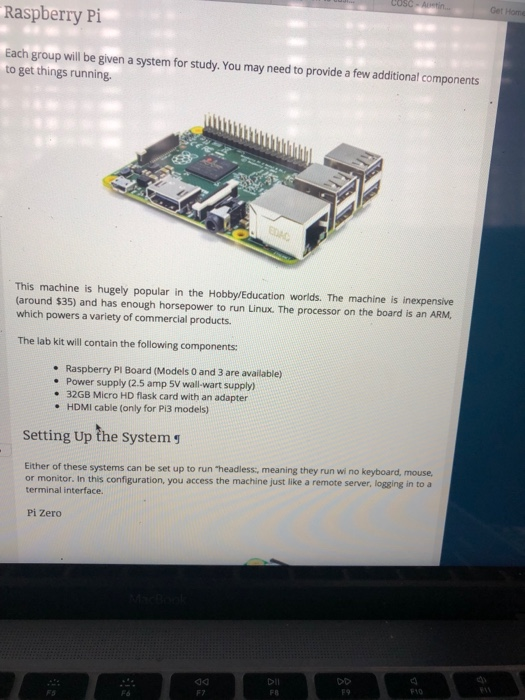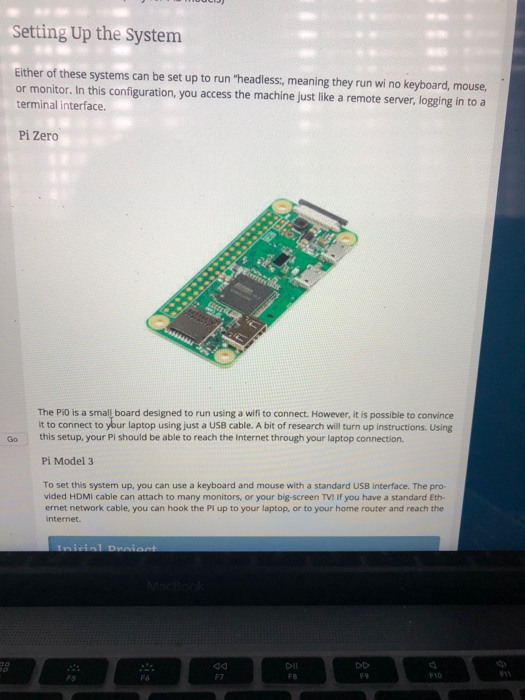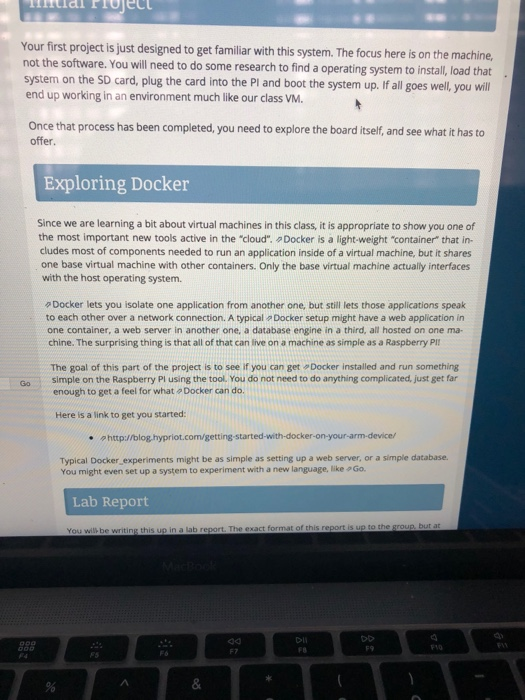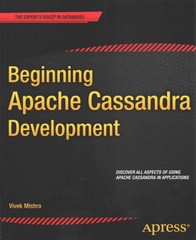You will be writing this up in a lab report. The exact format of this report is up to the group, but at a minimum it should include sections outlined below.
Warning
Each member of the team is required to author one section of the report. The author must be clearly identified in each section. Failure to provide this information will result in no credit for the assignment.
You will be required to write this report using reStructuredText markup. (You can see examples of this notation in my lecture notes). If done right, GitHub will format your pages for you so they look nice when viewed in a web browser. Nothing fancy is required, but short, one paragraph sections will not get full points. Treat this like a term paper.
about
Basic Board Setup
You will need to identify exactly what resource you need to have in hand to power up your board. In some cases, you will need cabling to attach it to external devices, and external power supplies. All necessary parts are available, but your group will need to request the necessary parts. must be no more one then one page. should be type plz



Get Home Raspberry Pi Each group will be given a system for study. You may need to provide a few additional components to get things running. This machine is hugely popular in the Hobby/Education worlds. The machine is inexpensive (around $35) and has enough horsepower to run Linux. The processor on the board is an ARM, which powers a variety of commercial products. The lab kit will contain the following components: Raspberry PI Board (Models 0 and 3 are available) Power supply (2.5 amp 5V wall-wart supply) 32GB Micro HD flask card with an adapter . HDMI cable (only for Pi3 models) Setting Up the System Either of these systems can be set up to run headless, meaning they run wi no keyboard, mouse or monitor. In this configuration, you access the machine just like a remote server, logging in to a terminal interface. Pi Zero DIl FS 1 F9 F10 F7 FS Setting Up the System Either of these systems can be set up to run "headless, meaning they run wi no keyboard, mouse, or monitor. In this configuration, you access the machine just like a remote server, logging in to a terminal interface. pi Zero The PiO is a small board designed to run using a wifi to connect. However, it is possible to convince it to connect to your laptop using just a uss cable. A bit of research will urn up instructions. Using this setup, your Pi should be able to reach the Internet through your laptop connection. Go Pi Model 3 To set this system up, you can use a keyboard and mouse with a standard USB interface. The pro- vided HDMI cable can attach to many monitors, or your big-screen TV! If you have a standard Eth- ernet network cable, you can hook the Pl up to your laptop, or to your home router and reach the internet Do Dil F8 FNO 1N F7 F6 Your first project is just designed to get familiar with this system. The focus here is on the machine not the software. You will need to do some research to find a operating system to instal, load that system on the SD card, plug the card into the PI and boot the system up. If all goes well, you will end up working in an environment much like our class VM Once that process has been completed, you need to explore the board itself, and see what it has to offer Exploring Docker Since we are learning a bit about virtual machines in this class, it is appropriate to show you one of the most important new tools active in the-cloud". Docker is a lightweight "container" that in. cludes most of components needed to run an application inside of a virtual machine, but it shares one base virtual machine with other containers. Only the base virtual machine actually interfaces with the host operating system. Docker lets you isolate one application from another one, but still lets those applications speak to each other over a network connection. A typical a Docker setup might have a web application in one container, a web server in another one, a database engine in a third, all hosted on one ma- chine. The surprising thing is that all of that can live on a machine as simple as a Raspberry PII Docker installed and run something Go simple on the Raspberry Pl using the tool. You do not need to do anything complicated, just get far The goal of this part of the project is to see if you can get enough to get a feel for what Docker can do. Here is a link to get you started: . http://blog.hypriot.com/getting-started-with-docker-on-your-arm-device/ Typical Docker experiments might be as simple as setting up a web server, or a simple database. You might even set up a system to experiment with a new language, like Go. Lab Report bo Dl FS F1O 8 Get Home Raspberry Pi Each group will be given a system for study. You may need to provide a few additional components to get things running. This machine is hugely popular in the Hobby/Education worlds. The machine is inexpensive (around $35) and has enough horsepower to run Linux. The processor on the board is an ARM, which powers a variety of commercial products. The lab kit will contain the following components: Raspberry PI Board (Models 0 and 3 are available) Power supply (2.5 amp 5V wall-wart supply) 32GB Micro HD flask card with an adapter . HDMI cable (only for Pi3 models) Setting Up the System Either of these systems can be set up to run headless, meaning they run wi no keyboard, mouse or monitor. In this configuration, you access the machine just like a remote server, logging in to a terminal interface. Pi Zero DIl FS 1 F9 F10 F7 FS Setting Up the System Either of these systems can be set up to run "headless, meaning they run wi no keyboard, mouse, or monitor. In this configuration, you access the machine just like a remote server, logging in to a terminal interface. pi Zero The PiO is a small board designed to run using a wifi to connect. However, it is possible to convince it to connect to your laptop using just a uss cable. A bit of research will urn up instructions. Using this setup, your Pi should be able to reach the Internet through your laptop connection. Go Pi Model 3 To set this system up, you can use a keyboard and mouse with a standard USB interface. The pro- vided HDMI cable can attach to many monitors, or your big-screen TV! If you have a standard Eth- ernet network cable, you can hook the Pl up to your laptop, or to your home router and reach the internet Do Dil F8 FNO 1N F7 F6 Your first project is just designed to get familiar with this system. The focus here is on the machine not the software. You will need to do some research to find a operating system to instal, load that system on the SD card, plug the card into the PI and boot the system up. If all goes well, you will end up working in an environment much like our class VM Once that process has been completed, you need to explore the board itself, and see what it has to offer Exploring Docker Since we are learning a bit about virtual machines in this class, it is appropriate to show you one of the most important new tools active in the-cloud". Docker is a lightweight "container" that in. cludes most of components needed to run an application inside of a virtual machine, but it shares one base virtual machine with other containers. Only the base virtual machine actually interfaces with the host operating system. Docker lets you isolate one application from another one, but still lets those applications speak to each other over a network connection. A typical a Docker setup might have a web application in one container, a web server in another one, a database engine in a third, all hosted on one ma- chine. The surprising thing is that all of that can live on a machine as simple as a Raspberry PII Docker installed and run something Go simple on the Raspberry Pl using the tool. You do not need to do anything complicated, just get far The goal of this part of the project is to see if you can get enough to get a feel for what Docker can do. Here is a link to get you started: . http://blog.hypriot.com/getting-started-with-docker-on-your-arm-device/ Typical Docker experiments might be as simple as setting up a web server, or a simple database. You might even set up a system to experiment with a new language, like Go. Lab Report bo Dl FS F1O 8









